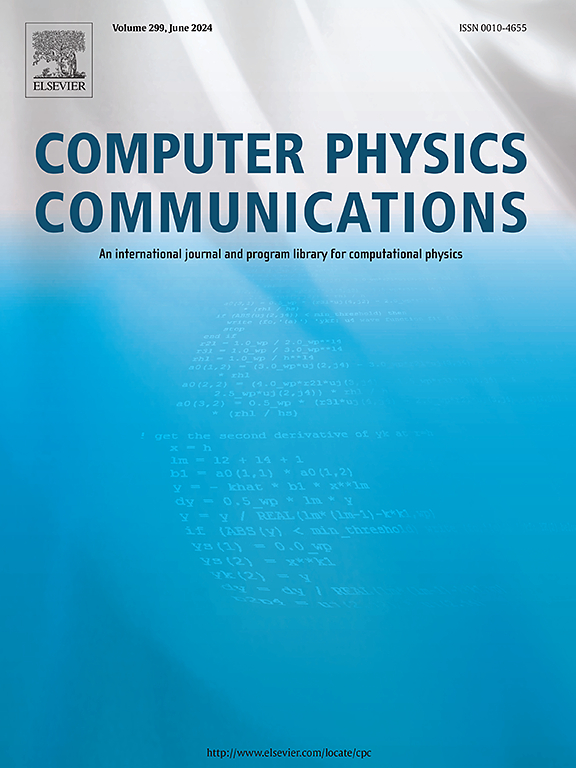Alternative split-step method for solving linearly coupled nonlinear Schrödinger equations
IF 7.2
2区 物理与天体物理
Q1 COMPUTER SCIENCE, INTERDISCIPLINARY APPLICATIONS
引用次数: 0
Abstract
In this paper we introduce an alternative method for solving linearly coupled nonlinear Schrödinger equations by using a split-step approach. This methodology involves approximating the nonlinear part of the evolution operator, allowing it to be solved exactly, which significantly enhances computational efficiency. The dispersive component is addressed using a spectral method, ensuring accuracy in the treatment of linear terms. As a reference, we compare our results with those obtained using the Runge-Kutta method implemented using a pseudo-spectral technique. Our findings indicate that the proposed split-step method achieves precision comparable to that of the Runge-Kutta method while nearly doubling computational efficiency. Numerical simulations include the evolution of a single soliton in each field and a collision between two solitons, demonstrating the robustness and effectiveness of our approach.
求解线性耦合非线性薛定谔方程的另一种分步法
在本文中,我们介绍了一种利用分步法求解线性耦合非线性薛定谔方程的替代方法。这种方法涉及近似演化算子的非线性部分,使其能够精确求解,从而大大提高了计算效率。色散部分采用频谱方法处理,确保了线性项处理的准确性。作为参考,我们将我们的结果与使用伪频谱技术实现的 Runge-Kutta 方法获得的结果进行了比较。我们的研究结果表明,所提出的分步法达到了与 Runge-Kutta 方法相当的精度,同时计算效率提高了近一倍。数值模拟包括每个场中单个孤立子的演化和两个孤立子之间的碰撞,证明了我们方法的稳健性和有效性。
本文章由计算机程序翻译,如有差异,请以英文原文为准。
求助全文
约1分钟内获得全文
求助全文
来源期刊

Computer Physics Communications
物理-计算机:跨学科应用
CiteScore
12.10
自引率
3.20%
发文量
287
审稿时长
5.3 months
期刊介绍:
The focus of CPC is on contemporary computational methods and techniques and their implementation, the effectiveness of which will normally be evidenced by the author(s) within the context of a substantive problem in physics. Within this setting CPC publishes two types of paper.
Computer Programs in Physics (CPiP)
These papers describe significant computer programs to be archived in the CPC Program Library which is held in the Mendeley Data repository. The submitted software must be covered by an approved open source licence. Papers and associated computer programs that address a problem of contemporary interest in physics that cannot be solved by current software are particularly encouraged.
Computational Physics Papers (CP)
These are research papers in, but are not limited to, the following themes across computational physics and related disciplines.
mathematical and numerical methods and algorithms;
computational models including those associated with the design, control and analysis of experiments; and
algebraic computation.
Each will normally include software implementation and performance details. The software implementation should, ideally, be available via GitHub, Zenodo or an institutional repository.In addition, research papers on the impact of advanced computer architecture and special purpose computers on computing in the physical sciences and software topics related to, and of importance in, the physical sciences may be considered.
 求助内容:
求助内容: 应助结果提醒方式:
应助结果提醒方式:


